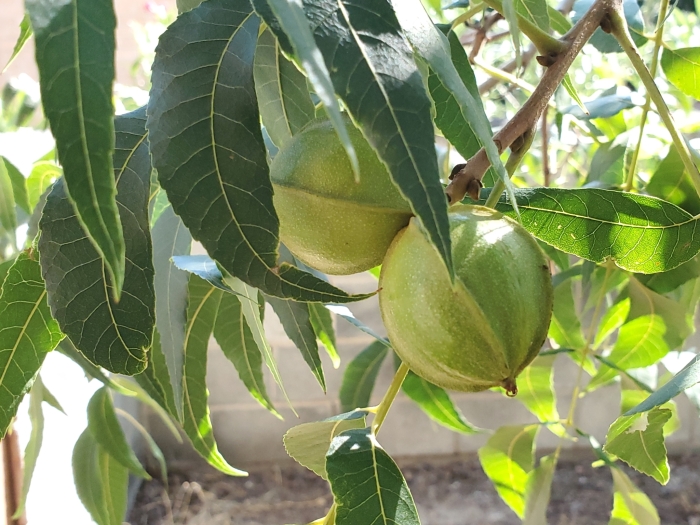Pecan
(Carya illinoinensis)
Pecan (Carya illinoinensis)
/
/

By Craig Martin no rights reserved
Public Domain












































































Estimated Native Range
Summary
The Pecan tree is valued for its long-lived, stately form and its ability to produce nuts with a rich, buttery flavor, which are consumed fresh or used in various culinary dishes. It is also planted for shade and ornamental purposes in large landscapes. Pecan trees require full sun and ample water for optimal growth and nut production, thriving in a range of soil types with varying drainage. They are suitable for USDA hardiness zones 5 to 9, preferring long, hot, and humid summers. Nut harvest typically occurs around mid-October. Pecan wood is also used in furniture and flooring, and the nuts are a source of antioxidants and healthy fats. However, pecan trees can suffer from several diseases, including pecan scab, and require careful management to prevent pest infestations.CC BY-SA 4.0
Plant Description
- Plant Type: Tree
- Height: 75-100 feet
- Width: 40-70 feet
- Growth Rate: Slow
- Flower Color: N/A
- Flowering Season: Spring
- Leaf Retention: Deciduous
Growth Requirements
- Sun: Full Sun
- Water: High
- Drainage: Fast, Medium, Slow
Common Uses
Bee Garden, Bird Garden, Butterfly Garden, Drought Tolerant, Edible*Disclaimer: Easyscape's listed plant edibility is for informational use. Always verify the safety and proper identification of any plant before consumption., Fire Resistant, Fragrant
Natural Habitat
River bottoms, floodplains, and rich, moist forests of the South Central USA and Mexico
Other Names
Common Names: Nogal Morado , Nuez Encarcelada , Pecanier , Pekannuß , Pekannußbaum , Hickorynußbaum , Pecán , Pecana , Pecanero , Nogal Americano
Scientific Names: Carya illinoinensis , Carya pecan , Carya olivaeformis , Hicoria pecan , Carya oliviformis , Carya tetraptera , Juglans oliviformis , Carya angustifolia , Carya diguetii , Juglans pecan
GBIF Accepted Name: Carya illinoinensis (Wangenh.) K.Koch